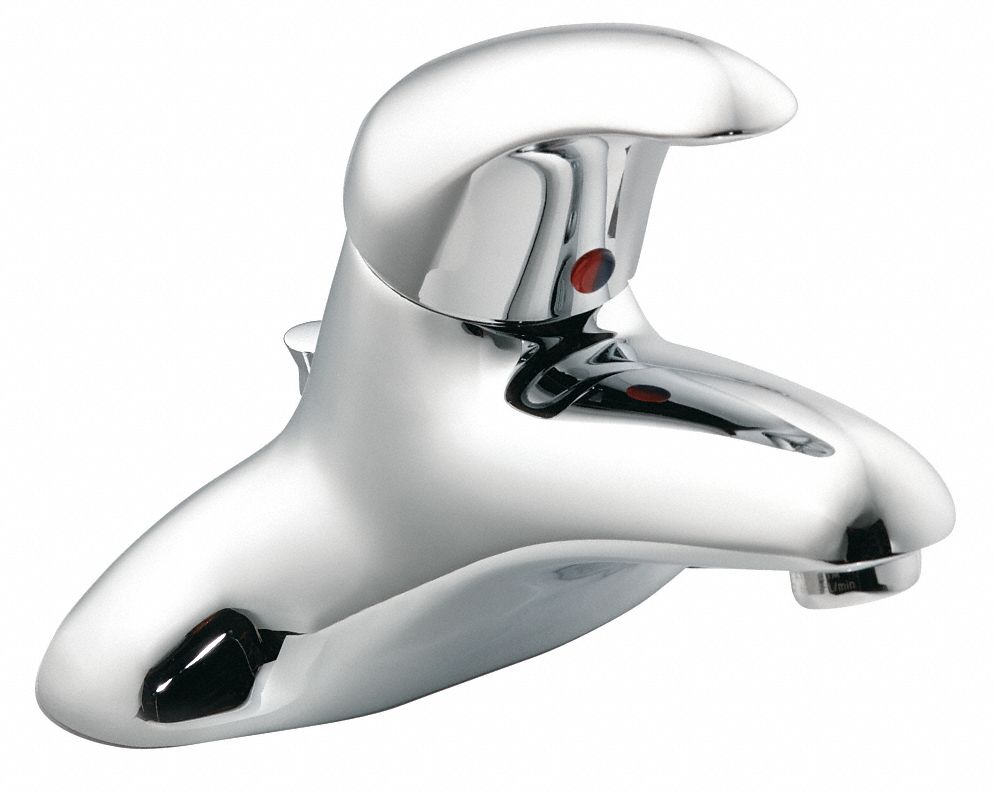Small Commercial Kitchen Design Ideas to Maximize Space
If you’re looking for a way to save space on your kitchen layout, small commercial kitchen designs are a great way to do just that. By reducing the overall size of your kitchen you’ll be able to package up a more efficient, cost-effective, and attractive workspace. Small commercial kitchens are a great way to take advantage of limited space while still providing quality kitchen layouts.
To create a successful small commercial kitchen layout, you’ll need to consider both the kitchen equipment and the design of the room itself. Strategically placing both your kitchen equipment and service elements allows you to maximize the space without compromising quality. When it comes to kitchen design, small changes such as incorporating extra storage, tidying up your countertops, and finely tuning your equipment placements can have a huge impact on the success of your kitchen.
6 Commercial Kitchen Layout Ideas For Your Business
When it comes to commercial kitchen layouts, the options can seem endless. Each business and location can require something completely unique, while still maintaining the durability and performance a commercial kitchen demands. When creating a kitchen layout, it’s essential to have your restaurant’s needs in mind. Here are 6 essential commercial kitchen layout ideas for your business.
The Island Setup: An island setup is a great way to pair your stove and oven with additional items, such as refrigeration, prep stations, and separate sinks. This is an ideal option for medium to large restaurants, as both allows for more space and functionality.
The line Setup: A kitchen line setup is perfect for small restaurants and catering companies. This type of commercial kitchen layout allows your staff to easily travel from one station to another while reducing the amount of space needed.
Restaurant Kitchen Design: Important Factors You Need to Consider
When designing or remodeling a commercial kitchen, there are many important factors you need to consider to ensure the layout of your kitchen is efficient and functional. Firstly, you’ll need to take into account the size of your restaurant. For smaller outlets, items such as refrigeration and grills will need to be incorporated to maintain flexibility to alter workflow as required. Secondly, you’ll need to consider the placement of your kitchen equipment. Placing larger equipment such as ovens towards the back of the kitchen while designating the necessary space for work areas and counters near the front are essential for effective workflow.
Finally, it's important to keep safety in mind when designing a restaurant kitchen. Choosing high-quality flooring that is non-slip and fire and thermal resistant can help protect your kitchen from potential damage. Also, when installing gas line equipment, be sure to consult with a professional to help with the design and layout.
Commercial Kitchen Layout and Design: What You Need To Know
When creating a successful commercial kitchen layout and design, there are a few essential elements you need to consider. Firstly, you’ll need to determine the size of your kitchen and the amount of space you’ll need for your equipment and staff. Secondly, consider your workflow. You’ll need to create enough space for staff to travel from station to station without any blockages and consider the placement of larger equipment such as ovens. Finally, consider practical elements such as safety and extra storage.
Safety should always be a priority in a commercial kitchen. Incorporating a fire extinguisher, non-slip flooring, and flame guards, can help protect your kitchen and staff in the event of a fire or accident. Additionally, implementing extra storage sections can help keep the kitchen organized and accessible, no matter how busy your kitchen is.
Bar & Restaurant Layout Design & Renovation Guide
A bar and restaurant layout design looks different for each establishment, however, there are certain elements that all bars and restaurants should consider if they want to create a profitable and enjoyable workspace. Firstly, decide on the size of your restaurant. This will help you determine the amount of space needed for kitchen equipment, furniture, and staff. Secondly, carefully plan the placement of each element to ensure there is enough room for staff to travel from station to station without any blockages. Additionally, consider power requirements for each output area and position outlets that are easy to reach.
Finally, when renovating your bars and restaurant kitchen layout, there are important safety elements to consider. Incorporating fire and thermal resistant flooring, quality fire extinguishers, and flame guards will ensure you and your staff stay safe in the event of an accident.
7 Commercial Kitchen Design Tips For Professional Kitchens
A professional kitchen design requires a high level of expertise and experience to achieve success. Here are 7 essential commercial kitchen design tips for professional kitchens.
Use Technology: Modern technology can help create a more cost-efficient and effective workspace. Utilizing energy-saving equipment, digital ordering systems, and smart storage solutions will help speed up processes and reduce costs.
Use Legs on Handwash Taps: Implementing legs on all handwash taps will help maintain hygiene standards while also encouraging staff to wash their hands more frequently.
How To Design A Professional Kitchen: Equipment Placement and Layout
Designing a professional kitchen isn't easy, however, with careful planning and consideration, it's possible to create an efficient, cost-effective, and attractive workspace. Creating an effective layout that optimizes workflow is essential for the success of a commercial kitchen. When laying out the placement of equipment and service elements, be sure to consider their shape and size and let any fixed items such as walls, doors, and windows, determine the general placement of the equipment.
Additionally, it's important to create a logical workflow so your staff have an efficient path from dumbwaiter to delivery station. Placing refrigeration and food storage equipment near prep stations can reduce travel time between stations, while positioning smaller items such as handwashing sinks near their corresponding food prep stations can also help increase productivity.
Small Commercial Kitchen Designs For Big Results
For those who are looking to limit their kitchen layout due to limited space, small commercial kitchen designs can provide a great way to achieve large results with little effort. By carefully planning out the placement of both the kitchen equipment and the overall design of the room you can create a workspace that is both efficient and cost-effective.
Some of the key points to consider when creating a successful small commercial kitchen design include maximizing storage solutions, implementing energy-saving features such as air curtains, and using digital ordering systems. Additionally, using flexible models of kitchen equipment and fittings can prove beneficial as they will enable you to make alterations if needed.
Steps to a Successful Commercial Kitchen Design
Designing a successful commercial kitchen often requires expertise and a detailed plan. To help guide you on the right path, here are the steps for a successful commercial kitchen design.
Step 1: Define Your Needs. Think about what type of food you’ll be cooking, as this will help you determine what type of kitchen equipment you’ll need. You’ll also need to consider extra features such as kitchen ventilation systems and space for clothes storage.
Step 2: Measure the Space. Take precise measurements of the area and consider how your equipment and staff will move ERrouss the room. Additionally, consider the work surfaces, sanitary areas, and machines you’ll need to fit into the room.
How To Plan & Design A Professional Kitchen in 8 Steps
Planning and designing a commercial professional kitchen can seem overwhelming, however, with the right guidance, it’s relatively straightforward. Establishing a clear plan from the start is essential, so here are 8 steps on how to plan and design a professional kitchen.
Step 1: Define Your Goals and Standards. Before you start your kitchen design, set out a clear set of goals and standards. This will be the foundation of your kitchen design from which you can then tweak and develop to suit your own preferences and preferences.
Step 2: Take Precise Measurement. Knowing the exact measurements of your kitchen is essential for designing an effective layout. To help with the planning process, use a tape measure and chalk to mark out the exact measurements of the space.
10 Essential Commercial Kitchen Design Tips & Tricks
Designing a commercial kitchen takes a lot of skill and experience. To help get the most out of your commercial kitchen design, here are 10 essential tips and tricks.
Utilize Energy-saving Features: Using equipment such as induction cooking systems can help make big savings on your electricity costs while also being more efficient and precise.
Replace Existing Equipment: Replacing existing equipment with new energy-efficient models will not only reduce your electricity bill but also increase the performance of your kitchen.
Small Commercial Kitchen Design: Creating Efficient and Visual Appeal
 A small commercial kitchen requires special design considerations, but the outcome
can be both attractive and efficient. By creating a well-thought-out plan,
commercial
kitchen owners
can create a more enjoyable environment while maintaining functionality.
reating
a kitchen floor plan
is the primary step of designing a
commercial kitchen
.
Factors like traffic flow should be considered when developing the plan. Once the kitchen’s
layout is completed, the appliances,
commercial cooking equipment
, and furniture can
be chosen.
A small commercial kitchen requires special design considerations, but the outcome
can be both attractive and efficient. By creating a well-thought-out plan,
commercial
kitchen owners
can create a more enjoyable environment while maintaining functionality.
reating
a kitchen floor plan
is the primary step of designing a
commercial kitchen
.
Factors like traffic flow should be considered when developing the plan. Once the kitchen’s
layout is completed, the appliances,
commercial cooking equipment
, and furniture can
be chosen.
Maximizing Useful Space
 Working within an established space can present challenges in a
small commercial kitchen
.
Utilizing kitchen cabinets and shelving will create more storage for necessary items.
Commercial kitchen equipment
should be placed in areas to allow for the most efficient movement.
Positioning of kitchen appliances will depend on the existing kitchen design. Selecting the
highest quality commercial appliances
and furniture can make a huge impact on the
overall look and feel of the space.
Working within an established space can present challenges in a
small commercial kitchen
.
Utilizing kitchen cabinets and shelving will create more storage for necessary items.
Commercial kitchen equipment
should be placed in areas to allow for the most efficient movement.
Positioning of kitchen appliances will depend on the existing kitchen design. Selecting the
highest quality commercial appliances
and furniture can make a huge impact on the
overall look and feel of the space.
Personalizing the Space
 Small
commercial kitchen design
can benefit from the personal touch of owner or
chef. Decorations like art, plants, and photographs can make a kitchen look more
inviting. Bold colors, unique accents, and an overall creative design can give any
kitchen a more forlorn look and feel. Purchasing furniture in more unconventional
shapes and materials can also create a more visually pleasing and professional atmosphere.
Utilizing the walls and ceiling by selecting light fixtures, art, and wall decorations can
also be another unique way to personalize the space.
Small
commercial kitchen design
can benefit from the personal touch of owner or
chef. Decorations like art, plants, and photographs can make a kitchen look more
inviting. Bold colors, unique accents, and an overall creative design can give any
kitchen a more forlorn look and feel. Purchasing furniture in more unconventional
shapes and materials can also create a more visually pleasing and professional atmosphere.
Utilizing the walls and ceiling by selecting light fixtures, art, and wall decorations can
also be another unique way to personalize the space.



















































































